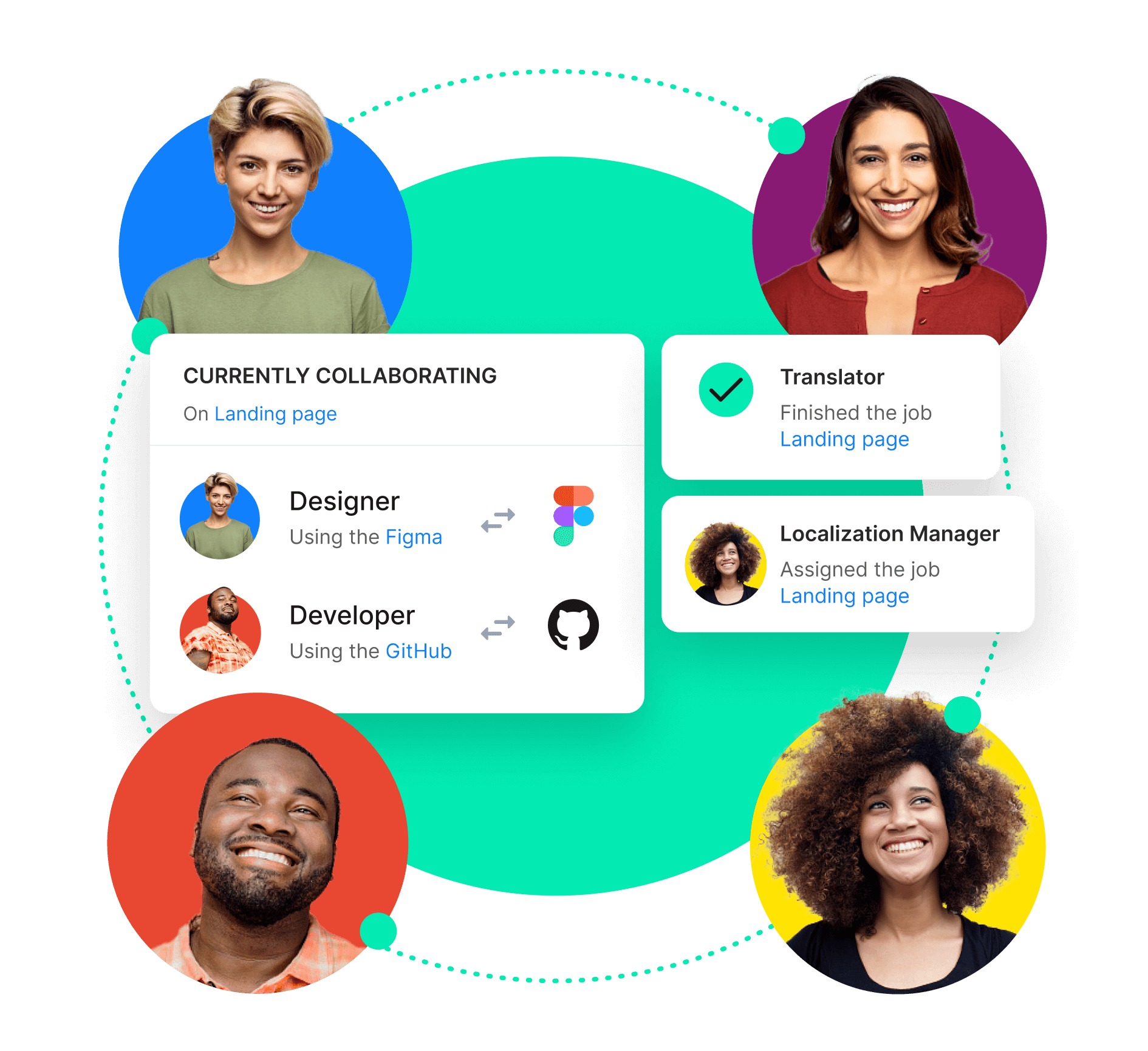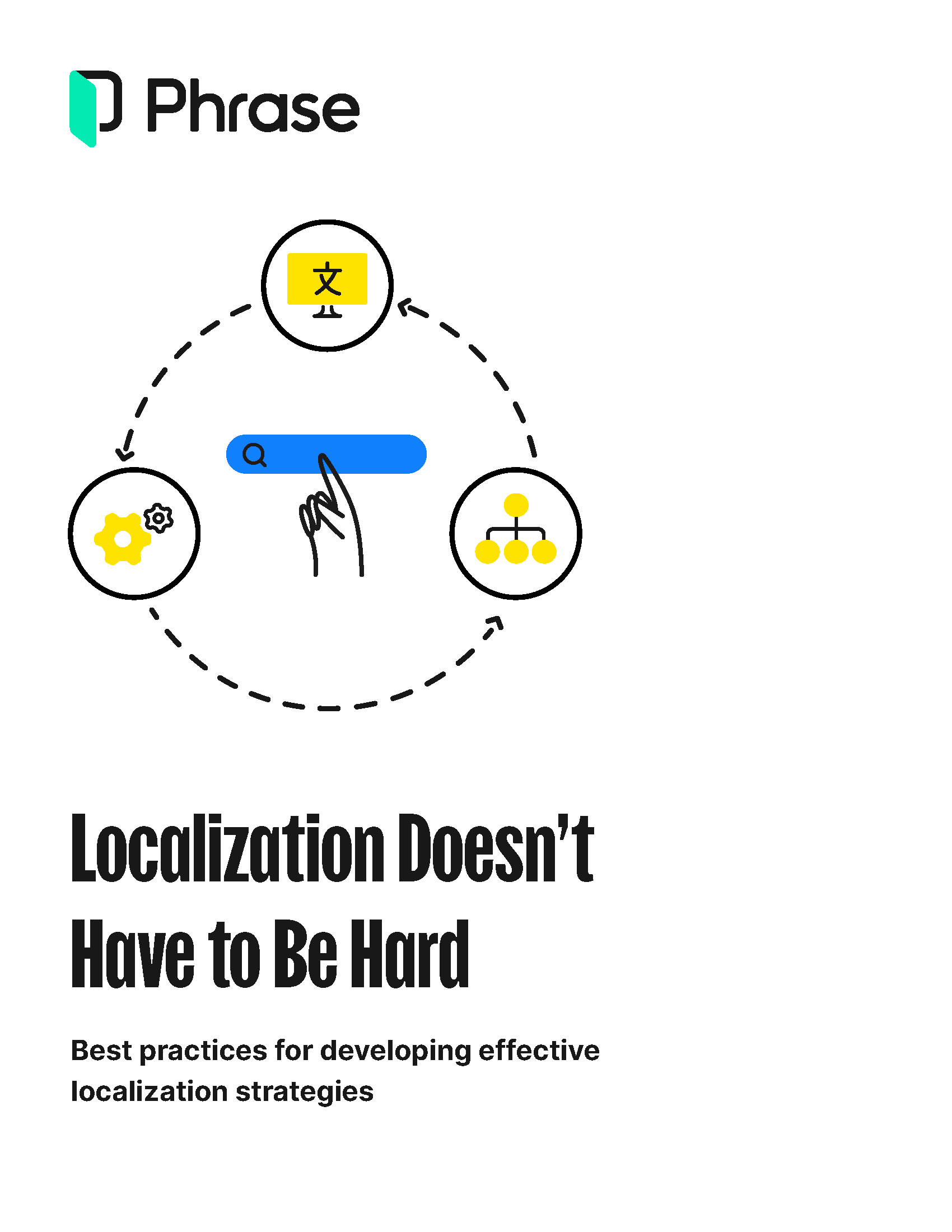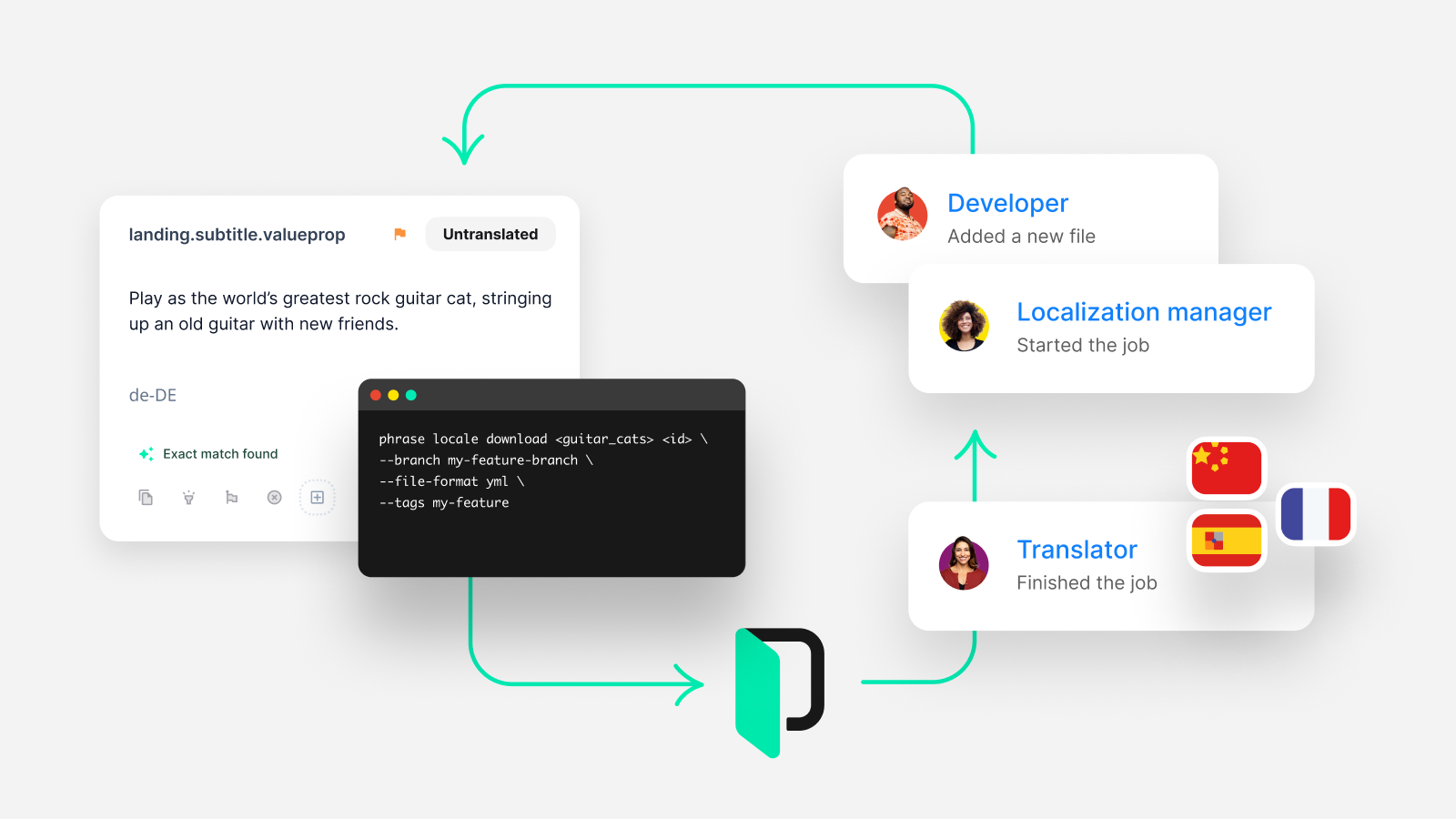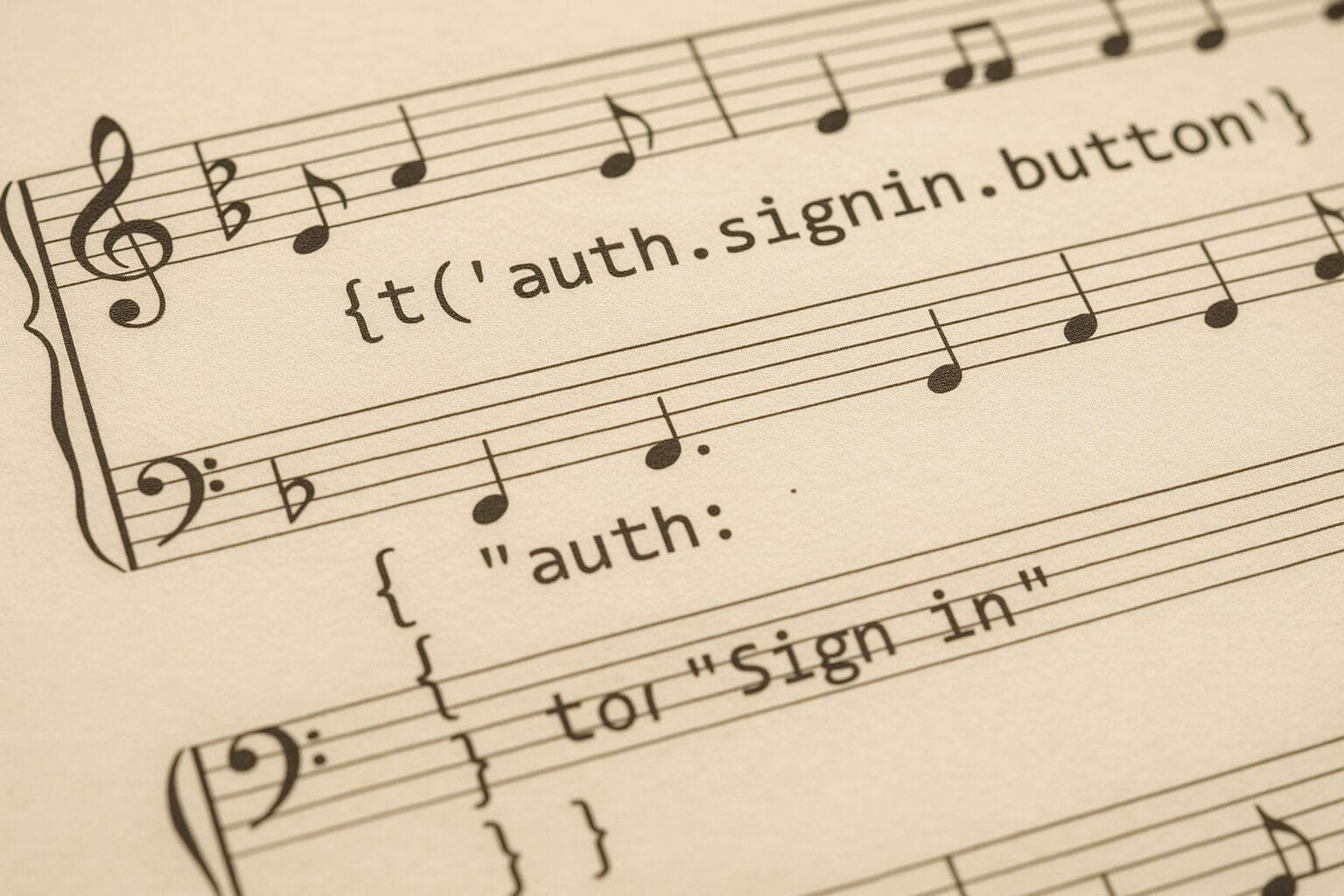Phrase and beyond
Turbocharging Localization with Seamless Team Collaboration: A Phrase Guide
Our world thrives on connections—between people, places, and ideas. At Phrase, we understand that connectivity lies at the heart of the modern business environment. It’s precisely this force of connectivity that can act as a catalyst in revolutionizing business operations and offering limitless possibilities for growth.
To unleash opportunity in the dynamic global market, businesses must learn to harness the power of connectivity from day one. By eliminating silos and bridging gaps between teams, systems, and processes, connectivity can turbocharge a company’s global efforts to increase efficiency, secure profit, and enable scalability.
Cloud localization and translation technology has brought about a new era of global connectivity, enabling seamless team collaboration and effective communication for brands to engage with customers worldwide like never before. This guide explains how you, too, can unlock the full potential of connectivity to drive global growth.

Unlock global business with the Phrase Localization Platform
Expand into new markets with all the tools you need in one technology suite for high-quality, fast, and scalable localization.
The toll of poor team collaboration on global business
Companies aiming to expand globally are increasingly challenged to strike a balance between standardization and local preferences. When you consider the vast international network of knowledge and operations that need to be managed, it becomes clear just how significant the localization challenge can be.
When haste makes waste—a cautionary tale of poor collaboration
A global technology company is preparing to launch a groundbreaking software product in multiple languages and in different target markets. In its eagerness, the marketing team at headquarters creates a massive global campaign without seeking input from the local marketing teams in each target market from the start.
The content on hand is largely generic and culturally inappropriate.
As the launch date draws nearer, stakeholders hastily go back and forth between disjointed communication channels to address the issue: emails, instant messages, phone calls—you name it. The localization team is now engaged in a frantic race against time to adapt the collateral for each target market, including the website, landing pages, email templates, chatbots, and more.
The localized assets are riddled with human errors, duplicate translations, or missing parts.
This is just one example of the potential pitfalls that businesses face when cross-functional localization teams don’t stay in sync. From wasted resources and missed opportunities to customer dissatisfaction, the effects of inadequate team collaboration on global business prospects can’t be ignored. Let’s explore each of these consequences further.
Poor connectivity causes wasted resources
Without smooth communication between teams, misunderstandings can easily spiral out of control, repeatedly leading to delays, missteps, duplicate effort, and revisions.
This redundancy introduces productivity-killing friction and resource waste that can drag an entire localization project down. Additionally, organizations often resort to costly manual workarounds to compensate for the lack of connectivity, further increasing expenses.
Poor connectivity leads to missed opportunities
Inadequate connectivity can significantly hinder businesses from seizing valuable opportunities. For example, the lack of effective communication between marketing and sales teams may result in leads being overlooked or missed altogether.
Without timely information sharing and seamless collaboration to identify and leverage potential prospects in the market, businesses run the risk of forfeiting valuable chances to expand their reach and maximize revenue.
Poor connectivity breeds customer dissatisfaction
When teams aren’t connected, fragmented interactions and the lack of a holistic understanding of the customer make it challenging to personalize offerings, address specific needs, and promptly resolve issues.
This can result in frustrated customers who may seek alternative solutions or voice their dissatisfaction through negative reviews and word-of-mouth, ultimately impacting the business’s reputation and potential for future growth.

Free download
Best practices for developing effective localization strategies
Explore how to tackle localization management efficiently and engage customers across the globe in their native languages and local experiences.
Unlocking the power of connectivity with the Phrase Localization Platform
Cloud-based localization and translation technology, such as the Phrase Localization Platform, has heralded a new era of global connectivity. By equipping organizations with seamless team collaboration and communication capabilities, this cutting-edge technology is revolutionizing the way brands connect and engage with international customers.
Designed with connectivity and collaboration in mind, the Phrase Localization Platform can help your business create a wealth of new growth opportunities. It brings together all your teams to collaborate in real time within one suite of translation technology products and provides every user supporting your localization efforts with the ultimate user-centric translation experience.

For every fundamental business goal on your global expansion agenda, Phrase’s connectivity capabilities have the power to redefine success. Let’s delve into how they can help your business:
- Achieve cost-effectiveness and scalability
- Foster customer trust and brand recognition
- Capitalize on early opportunities to maximize revenue
Achieving cost-effectiveness and scalability
Your strategic aim: Optimizing resources to save valuable time and money.
| Fragmented localization function | Connected localization program |
| Teams working in isolation manually manage localization projects using different specialized tools—tracking changes across various text documents or spreadsheets and relying on separate project management tools to coordinate tasks.
Duplicate efforts, unanswered questions, miscommunication, and delays occur daily. Managers waste time and effort in recruiting, onboarding, and training linguists for each target market. The lack of real-time communication between in-house teams and external translators leads to avoidable re-dos that decrease productivity and drive up costs. |
Teams use the Phrase Localization Platform as a single point of truth for all company assets, ensuring complete visibility of the latest version of content.
Every stakeholder receives automatic in-app notifications and updates on task progress, job status, or potential errors. Managers leverage a vendor-agnostic translation platform to order and manage professional translations from third-party LSPs directly within Phrase. With mentions, comments, and tags, Phrase enables open communication between teams, resulting in smooth workflows and cost-savings. |
The achieved transformation: Optimized resource management, faster turnaround times, and reduced costs.
Driving customer trust and brand recognition
Your strategic aim: Delivering high-quality localized content while maintaining global brand consistency to meet customer needs and foster loyalty.
| Fragmented localization function | Connected localization program |
| Teams manually create localized content across different markets without access to the most current version of the company’s brand guidelines.
Content is out of date and of variable quality, brand messaging is inconsistent, and local relevance is overlooked. Editors aren’t able to ask questions to translators to clarify the rationale behind some language choices. Generic and culturally inappropriate materials lead to customer dissatisfaction. |
Localization teams can access translation memories, glossaries, style guides, and other resources to ensure brand consistency across all localized versions.
Contextual support, such as the ability to upload automatic screenshots, enhances translation accuracy. Editors can leave comments and questions for translators within the platform and easily share information through individual and group mentions. The localization team is involved from the start in the planning of global operations, pre-emptying potential localization problems and mitigating the risk of brand reputation damage. |
The achieved transformation: Happy, satisfied customers and a unified global brand presence that fosters trust and loyalty.
Seizing early opportunities to maximize revenue
The strategic aim: Streamlining operations for faster time to market.
| Fragmented localization function | Connected localization program |
| Teams rely on manual processes to approve content and provide feedback, often delivering a product with human errors, duplicate translations, or missing parts.
Developers need to identify and extract the correct strings for translation by copying and pasting the source content into a new document or spreadsheet. Delays of localizing with spreadsheets result in higher long-term costs, including increased hours, additional personnel, and more time spent on error correction. There’s no way to ensure that content updates in one language will be reflected in other languages without manually tracking and coordinating changes across multiple documents. |
Phrase’s advanced translation tools, including translation memories and term bases, create productivity- and confidence-boosting translation environments across products.
Content synchronization between the Phrase TMS and Phrase Strings products allows for effective content management across translation platforms. Custom automated workflows across the suite with Phrase Orchestrator ensure maximum efficiency. Whenever help is needed, Phrase’s Success Plans empower teams to stay connected with subject matter experts ready to provide help at every step of the localization process. |
The achieved transformation: Increased agility and faster time to market.
The common denominator in all of the ideal connected scenarios is cloud localization technology. When enterprises tap into the latest tools to facilitate localization operations, they can enhance team communication, streamline workflows, reduce manual translation work, eliminate discrepancies, and efficiently manage the entire localization process.

Dive deeper
How a fashion search engine leverages team collaboration for global growth
Enrique Quílez, Localization Manager at Lyst, takes us to the runway of localization, illuminating key challenges and opportunities in fostering team collaboration for global growth.
Join the connectivity revolution
Connectivity is essential for unlocking opportunities in the global business landscape. When teams are well-connected, they can optimize their resources, seize new opportunities, boost customer satisfaction, and drive significant business growth.
Investing in state-of-the-art translation and localization technology, such as the Phrase Localization Platform, gives you the key to unleashing the full potential of connectivity. Join the revolution and discover the advantages of using Phrase today.
Speak with an expert
Want to learn how our solutions can help you unlock global opportunity? We’d be happy to show you around the Phrase Localization Platform and answer any questions you may have.






